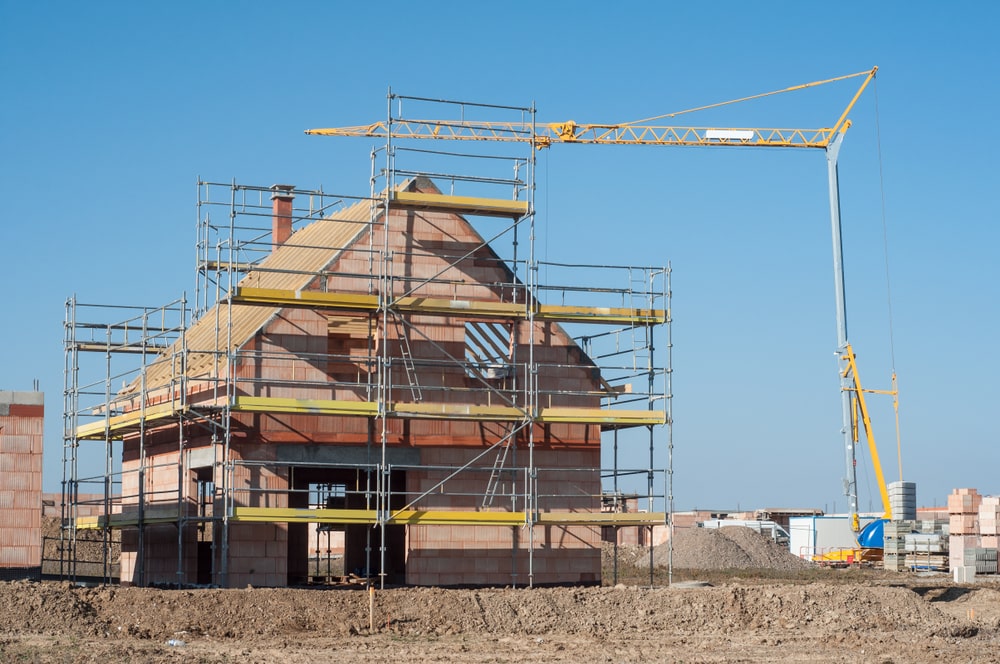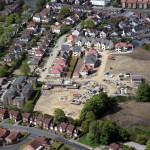News - Construction News
Infrastructure – the solution to the housing crisis?

In 2017 the elected Government pledged to deliver one million homes by the end of 2020, and half a million more by the end of 2022. Recent figures suggest that housing targets are on track, despite being in the midst of one of the most turbulent and challenging periods of UK politics.
Putting statistics aside, many believe that the UK is still experiencing a housing crisis and questions have been raised as to whether the determination to hit a housing number is in fact overshadowing a larger issue – the ability to provide appropriate and viable places for people to live, work and grow.
In the longer term, could the relentless drive to meet politically generated targets compromise the availability of quality places for people to live?
Across the country there is a perceived imbalance in the approach taken to the housing problem. Inflated land prices, predominately in the South, have created a tough environment for developers, as they attempt to provide affordable housing in otherwise unaffordable surroundings. However, the Midlands appears to offer a number of success stories. A combination of many positive factors, including affordable land and large amounts of business investment in the region, has helped to create increased confidence and opportunities.
Providing homes that people want to live in is only part of the solution. Ensuring properties are set in viable communities is key to a development’s longevity and appeal. Infrastructure is central to ensuring new homes are well connected and it shouldn’t be overlooked when encouraging communities to grow and develop.
New developments are often built in places that lack the essentials needed to become a true community, such as local amenities, recreational land and improved transport links. People understandably wish to have homes with clear access to public open space and the ability to shape their surroundings to meet the requirements of a growing community. Home owners influence the public realm and environment around them, presenting them with something that money can’t buy: a rightful pride in an ever changing but sustainable ecologically-friendly community environment.
Furthermore, people of course wish to be well connected, both in terms of essential transport links and broadband: they want to live in areas where they can shop locally and register with a local health practice which is suitably resourced and capable of meeting the increased demand by the growing community. It is essential that the infrastructure provision reflects these vital aspects.
However, putting in place large-scale infrastructure is increasingly expensive. Contributions to infrastructure such as roads, drainage, improved transports links, education, healthcare and emergency services are taken straight off the developer’s bottom line, affecting the initial decision to build in the area in the first place. This aspect also influences the extent to which vital community services are sourced and invested in, as well as how long they will be provided for after the developer has moved on.
There is no denying that the current economic uncertainty has scaled down the appetite for larger scale developments, with anecdotal evidence suggesting more housebuilders are increasingly choosing to instead progress smaller sites with fewer homes. Smaller sites usually have fewer infrastructure contributions, yet when considered in aggregate, still affect the number of cars on the roads and increase demands on essential services such as healthcare and education. As a result, it is generally the larger sites that are left to provide for the shortfalls, which often leads to delays to decision making about whether the largescale sites are economically viable.
For those developers committed to building bigger sites already, there is a desperate need for a more joined-up approach between planners, developers and local authorities. This is necessary to ensure that new infrastructure meets the requirements of growing communities and are proportionate both to the viability of the development in question, as well as the locality and region in which they are situated. Getting this right will ensure that sustainable homes can be provided, both in terms of quality of build and economic viability. Additionally, it will also allow developers to generate suitable profits to offset the associated investment and risk when providing essential infrastructure which encourages a community to properly grow and thrive.
Typically, controls are put in place to limit the number of homes a developer can build before they must begin work on facilities. However, different parties often have different priorities. On one hand a developer may wish to build homes of a certain design and type to generate the returns needed to pay for infrastructure investment, while a local authority’s priority may need such designs to meet requirements for the area as whole. In planning and development terms, these opposing approaches can often produce conflicting results and stifle the much-needed development altogether.
Having conflicting priorities can have huge implications on the viability of a site. For instance, housing officers may ask for there to be more bungalows, yet by doing so the needs of the community may also change. The demand for a new school may diminish and instead be replaced by greater provisions of health centres and wraparound care. A little more freedom from planners when approving designs for developments could make a vast difference, allowing fledgling communities to establish themselves before specific infrastructure requirements are imposed at a local authority level. In turn, early collaboration can ensure homes for different generations of people with understandably different priorities can be provided in future.
Similarly, such jarring measures are often reflected in the approach taken when working with an applicant to agree a scheme. With often incompatible criteria, local authorities face the challenge of balancing various demands from either side of the table, which have the potential to block developments altogether. To overcome this, an independent role could be created within local authorities to deliver a scheme which takes every element into consideration from the outset, resulting in a scheme that ultimately works for every stakeholder.
Good infrastructure is crucial to successful housing delivery, boosting the development of new homes while enabling and encouraging people to invest on all levels in an area that they want to live in. While the housing crisis is unlikely to dissipate once the million new homes mark has been reached, a joined-up approach between developers and the public sector has the potential to accelerate the delivery of more quality homes in thriving communities. Applying that joined up approach is perhaps a greater, if not more important, challenge than meeting targets.
Article supplied by Martin Jones, partner and head of projects, infrastructure & regeneration at Shakespeare Martineau.
Related Articles
More News
- UK Introduces New Trade Measures to Support Steel Sector
11 Jul 25
Steel producers across the UK will benefit from stronger trade measures from 1 July.
- Clean energy future to be ‘built in Britain’
10 Jul 25
The Clean Energy Industries Sector Plan comes into force to ‘build it in Britain’.
- Thousands more to get the tools they need to start construction careers
9 Jul 25
Thousands of people are set to benefit from on-the-job training and career opportunities in the






